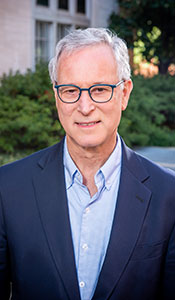Because the occurrence of tumors is one of the hallmarks of all forms of NF, imaging studies, such as CT or MRI scans, serve a central role in the clinical diagnosis and management of the disease. This month, I’d like to focus our discussion on the primary clinical approaches regarding the use of imaging in the diagnosis and management of NF. Within the NF clinical community, there are essentially two different perspectives on the use of imaging. The first approach advocates proactive screening to identify the presence of tumors. While many of these tumors may be small at the time, the idea is that early identification of the tumors may allow for more effective treatment. The second approach recommends the use of imaging only when specific clinical indications are present. I have tended to adhere to the latter approach of performing imaging to address specific clinical problems or concerns.
Clinical Approach to Imaging
Although lesions can be identified at an early point in some people, the problem is that most are untreatable at that point in time. Moreover, in some cases, identifying these tumors at an early stage may open the possibility of instituting potentially harmful treatments, including surgery. Finding these tumors can also cause anxiety and worry in many patients and families. For these reasons, we in the UAB NF Clinic advocate a clinical approach to imaging based on the presence of specific signs, symptoms, or problems.
A common goal of imaging in NF is to identify tumors in the nervous system, especially, in children, the presence of an optic glioma, which is a tumor of the optic pathway that occurs in 15% of children with NF1. While this condition can cause problems such as loss of vision or hormonal imbalances, it is known that the majority of optic gliomas are non-progressive and do not require treatment. An important question for clinicians is how to identify those patients with optic gliomas who need treatment. We have tended to use the clinical measures to identify children at risk for optic glioma, including routine yearly eye exams with a pediatric ophthalmologist. If a concern arises based on the ophthalmologic exam, a brain MRI scan would be performed. We would plan to re-evaluate this approach in the future when treatments have advanced to the point that early scanning for the identification of optic glioma tumors is beneficial. For example, if scanning children at a certain age could identify optic gliomas for a specific treatment protocol, preventive scanning could be justified. However, at this time, the information gained from preventive scanning for optic gliomas does not offset the risks, such as the fact that sedation is required for imaging in children and there is no definite clinical benefit to identifying these tumors in the absence of clinical symptoms.
The use of whole body MRI is beginning to emerge as a screening tool for the identification of tumors in people with NF. This approach can identify tumors, but the detail of imaging is usually less than would be obtained from a focused study. As with brain imaging, the question is what would we do with the information if we found a tumor that currently can’t be treated? As treatment options mature, we may reach a point where identifying tumors early on is beneficial to institute therapy. For the moment, however, routine imaging produces a fair amount of information that is not actionable as well as the risk of anxiety in patients and their families. For these reasons, we continue to take a clinical approach to imaging that involves performing imaging studies when clinically indicated, though not as a broad screening test.
A few months ago, I reviewed a publication of clinical guidelines for adults with NF1. Recently, a parallel set of guidelines for children with NF1 was published. I will review these guidelines as well, beginning with next month’s blog.
